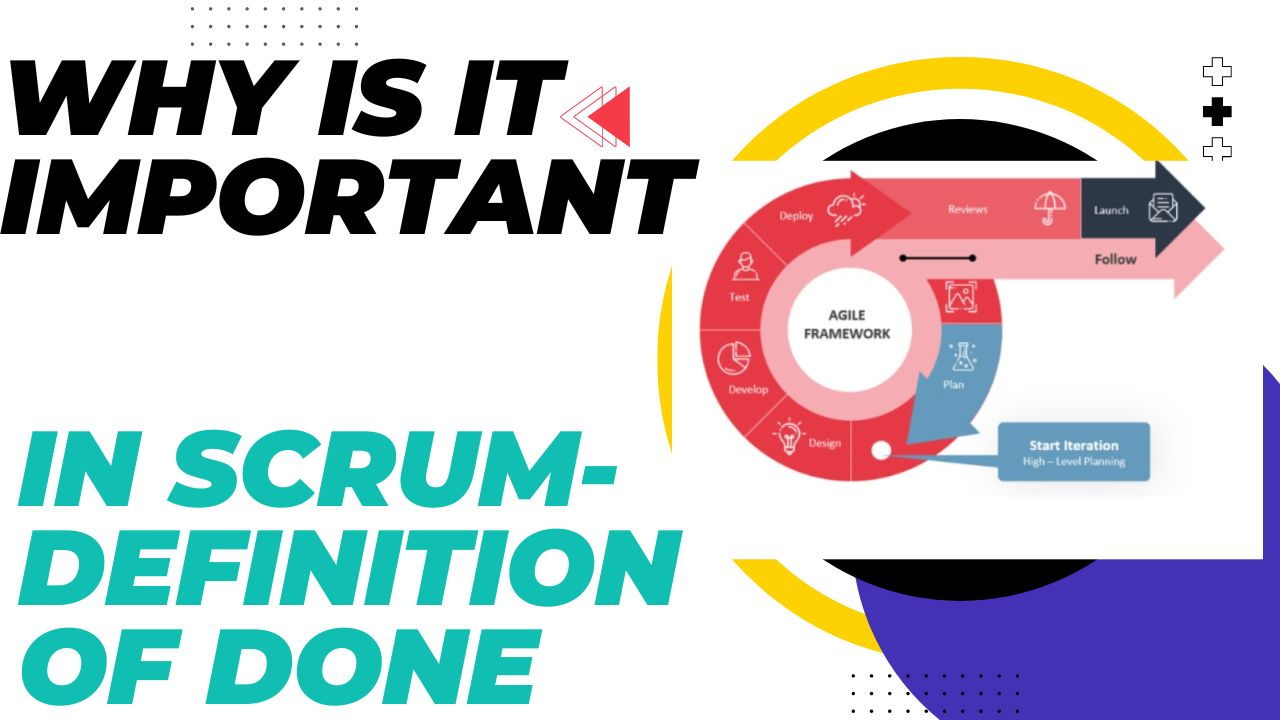The Definition of Done (DoD) in Scrum serves as a vital compass, guiding development teams towards the completion of their projects with excellence. It encapsulates the collective agreement on what it means for a task or user story to be truly finished, encompassing various aspects such as functionality, quality, and usability. Essentially, the DoD ensures that each increment of work meets the team’s standards and is ready for deployment, thus fostering transparency, accountability, and ultimately, customer satisfaction.
Table of Contents
Understanding the Definition of Done in Scrum: Enhancing Project Quality
Introduction: In the world of Agile methodologies, Scrum stands out as a popular framework for managing complex projects. At the heart of Scrum lies the concept of the “Definition of Done” (DoD), a crucial element that ensures project quality and completion. In this article, we delve into the significance of the Definition of Done, its components, and why it’s vital for successful project delivery.
What is the Definition of Done?
In Scrum, the Definition of Done represents the agreed-upon criteria that a product increment must meet to be considered complete and ready for release. It encompasses various aspects, including functionality, quality, performance, and usability. Essentially, it defines the standards that the development team must adhere to for each user story or task.
Components of the Definition of Done:
The Definition of Done varies from one project to another and is often tailored to suit the specific needs and requirements of the team.
Functional Requirements: This involves ensuring that the user story or task fulfills its intended purpose and meets the acceptance criteria specified by the product owner.
Quality Assurance: It includes testing processes such as unit testing, integration testing, and user acceptance testing to validate the functionality and identify any defects.
Documentation: This component involves documenting the changes made, updating user manuals, release notes, and other relevant documentation to facilitate seamless deployment and usage.
Performance: It ensures that the product increment performs efficiently under various conditions and meets the specified performance benchmarks.
Security: This aspect focuses on addressing any security vulnerabilities and ensuring that the product meets the necessary security standards and regulations.
User Experience (UX): It involves assessing the usability and user-friendliness of the product, ensuring that it provides a satisfactory experience for end-users.
Deployment: This component ensures that the product can be deployed successfully in the production environment without any issues or disruptions.

Components of the Definition of Done:
Let’s break down the Definition of Done into digestible pieces using a friendly analogy:
The Definition of Done plays a pivotal role in the success of a Scrum project for several reasons:
Quality Assurance: By establishing clear criteria for completeness, the Definition of Done helps maintain a high level of quality throughout the development process. It ensures that the product meets the expectations of stakeholders and end-users.
Transparency and Accountability: Having a well-defined Definition of Done fosters transparency within the team and provides a clear understanding of what needs to be accomplished for each task. It holds the team accountable for delivering work that meets the agreed-upon standards.
Risk Mitigation: By addressing various aspects such as functionality, performance, and security, the Definition of Done helps mitigate risks associated with product development. It reduces the likelihood of defects, delays, and unexpected issues surfacing later in the project lifecycle.
Continuous Improvement: The Definition of Done serves as a baseline for evaluating the team’s performance and identifying areas for improvement. By regularly reviewing and refining the Definition of Done, teams can strive for continuous improvement and deliver higher-quality products with each iteration.
Customer Satisfaction: Ultimately, adhering to a robust Definition of Done results in the timely delivery of valuable and high-quality products, leading to increased customer satisfaction and loyalty.
Why is the DoD Important?
Now that we’ve explored the components of the DoD, let’s see why it’s so crucial for success:
*Imagine you’re baking a cake. You wouldn’t call it finished until it’s fully baked, decorated, and ready to be enjoyed, right? Similarly, the DoD ensures that your product is truly “done” – meeting all necessary criteria before it’s released to customers.
*By setting clear standards for completeness, the DoD promotes transparency and accountability within the team. Everyone knows what needs to be done, reducing misunderstandings and ensuring that tasks are completed to a high standard.
*Think of the DoD as a safety net, catching potential issues before they reach your customers. By addressing quality, performance, and security concerns upfront, you can minimize the risk of bugs and glitches surfacing later on.
*Ultimately, the DoD is about delivering value to your customers. By adhering to rigorous standards of quality and completeness, you can ensure that your product meets their needs and exceeds their expectations.
Conclusion: In conclusion, the DoD is a fundamental concept in Scrum that ensures the completeness and quality of product increments. By defining clear criteria for acceptance, teams can maintain transparency, accountability, and ultimately deliver products that meet the needs and expectations of stakeholders. Embracing the DoD not only enhances project quality but also fosters a culture of continuous improvement and customer satisfaction.



